Hairline Lowering Surgery in Singapore
Search and Compare the Best Clinics and Doctors at the Lowest Prices for Hairline Lowering Surgery in Singapore
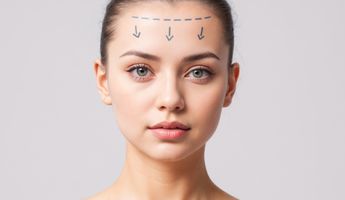
Find the best clinics for Hairline Lowering Surgery in Singapore
No pricing info available
Egypt offers the best prices Worldwide
Price: $ 500
From 1 verified reviews
Su Anh, 17 November 2019
I had great massage here after my surgery, very recomend this
- Home
- Singapore
Compare Before & After Photos of _procedure_photos.phpHairline Lowering Surgery
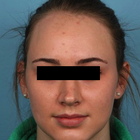
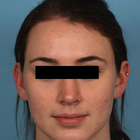
Front view
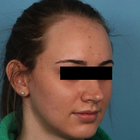
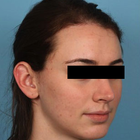
Half-side view

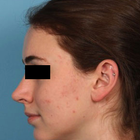
Full-side view

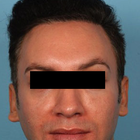
Front view
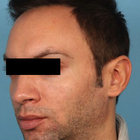
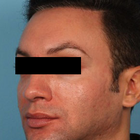
Half-side view


Full-side view
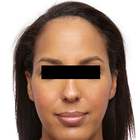

Front view
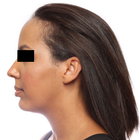

Full-side view
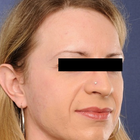
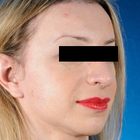
Half-side view
WHY US?
At Medijump, we're making medical easy. You can search, compare, discuss, and book your medical all in one place. We open the door to the best medical providers worldwide, saving you time and energy along the way, and it's all for FREE, no hidden fees, and no price markups guaranteed. So what are you waiting for?

Free

Best Price

Widest Selection

Risk-Free
What you need to know about Hairline Lowering Surgery in Singapore
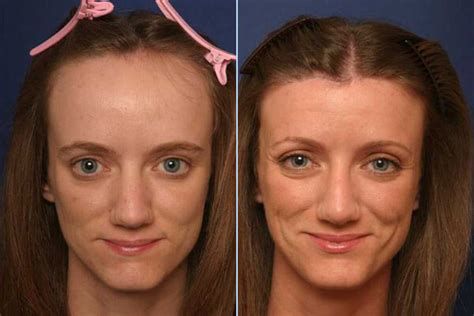
Also known as Forehead Reduction, Forehead Contouring or Scalp Advancement, Hairline Lowering Surgery allows patients to lower their frontal hairline, often lowering it by up to 2 inches. This procedure aims to reduce the distance between the hairline and the eyebrows, creating a more proportionate appearance. It is most commonly done on women with high hairlines, often the result of hair loss.
The procedure usually takes a couple of hours and is performed under general anesthetic. The new hairline is marked on the forehead, the surgeon will cut away this excess skin and the scalp is lowered to the new hairline. Incisions are strategically placed to minimize the visibility of the scar, making it virtually undetectable as it's covered by hair. It's common to combine hair lowering surgery with Facial Feminization Surgery (FFS). Contact a reputable clinic to ensure the best possible results.
What is the cost of Hairline Lowering Surgery in Singapore?
Before choosing a procedure, it is essential to understand the cost of a Hairline Lowering Surgery in Singapore. The cost might vary depending on a number of factors, including the complexity of the procedure, the surgeon's experience and reputation, and the facility. This approximate cost mostly covers the surgeon's fees, anaesthesia, required medical exams, and hospital or operation centre expenses. This is only a broad estimate, so when accounting for other charges, the exact prices might be higher. The ultimate cost may increase as a result of some factors, including consultation fees, outlays for post-operative care such medications, bandages, and follow-up consultations, as well as potential further surgeries to control complications or enhance outcomes.
It's important to keep in mind that Hairline Lowering Surgery is frequently regarded as a cosmetic surgery and may not be covered by conventional health insurance plans. It is best for the patient to speak with their insurance company before the procedure to understand the specific out-of-pocket costs they would have to pay. Some cosmetic surgery practises may provide financing options or payment plans to help patients manage the cost of the procedure.
What does a Hairline Lowering Surgery Procedure Involve?
Hairline lowering suregry is performed under local or general anesthesia. Before the operation begins, the surgeon draws an anticipated post-operative hairline. The surgery is performed according to this and an incision is made along the hairline. The excessive scalp is cut and removed and the rest is stretched to the new hairline. If this is not enough, tissue expanders are used to make it to the new hairline level. Sutures are used to fix the scalp to the bone and incisions are stitched with bandages being applied over the top.
The medical professional ensures that the incision marks are seamlessly concealed within the hairline, thereby reducing any visible traces of the procedure. Once the operation is concluded, the cut is stitched, and a gentle dressing is applied to shield the wound and diminish inflammation. It's important to understand that the intervention may lead to temporary loss of sensation or minor prickling around the area of incision, however, these symptoms tend to dissipate within several months.
How Long Should I Stay in Singapore for a Hairline Lowering Surgery Procedure?
Hairline lowering surgery is an outpatient procedure that takes around 1.5 to 2 hours to complete. After the effects of the sedation subside, you are allowed to leave. Still, you should aim to stay in Singapore for at least 6 days post-op. During this period, you will have a follow-up with the surgeon to check everything is healing as expected and the sutures are removed, usually after 5 to 6 days - this is when you're given the all-clear to travel home.
What's the Recovery Time for Hairline Lowering Surgery Procedures in Singapore?
It will take between 3 to 6 months to allow the regrowth of hair through the scar, which is important as it hides the scar. Recovery time varies from person to person and some people can get back to their normal routine even after 3 days. At least a week is usually required to get back to normal activities and you may find some swelling and bruising over your forehead in the early days. Pain is managed with painkillers and all symptoms subside after a couple of days. A numbing of the forehead is common and normal feeling usually returns after 3 to 5 days.
What sort of Aftercare is Required for Hairline Lowering Surgery Procedures in Singapore?
Aftercare following a Hairline Lowering Surgery is crucial to ensure a smooth recovery and minimization of potential complications. The following are some useful aftercare tips:
- Use icepacks in the initial days to help with inflammation and bruising. Ice is effective in reducing swelling immediately.
- Do not take anti-inflammatory medicines as they increase bleeding tendency.
- Continue taking painkillers prescribed by your doctor.
- Try not to look upwards and avoid frowning as this can be damaging to your stitches.
- Do not lift heavy objects.
- Keep your head a little higher whilst resting.
- Ensure that tight bandages have been applied over the wounds and replace regularly with fresh ones.
- Do not take a bath when the bandages are still intact as a wet bandage can be the cause of infection.
- Avoid strenuous activities such as the gym, running, swimming, etc. for at least 2 weeks after the surgery.
- Do not put hair bands or any other accessory on your head for some time.
- Do not drink or smoke as it will hinder the healing process.
- Ensure you have a diet rich in vitamin C as it makes the healing process faster.
What's the Success Rate of Hairline Lowering Surgery Procedures?
A Hairline Lowering Surgery frequently yields remarkable results, with a significant number of individuals expressing contentment with their post-procedure appearance. Nevertheless, outcomes may differ based on the medical institution or medical professional involved. With the possibility of the scar being visible with certain hairstyles, Hair Transplantation could be applied to further reduce the appearance of any scarring.
Notably, while Hairline Lowering Surgery tends to yield positive results for the majority, it might vary on an individual basis. Factors such as your unique hair growth pattern, scalp flexibility, and the overall state of your hair condition could all influence your final outcome. Therefore, maintaining ongoing communication with your medical professional and adhering to their recommendations both pre and post-treatment is crucial to optimising your results.
Are there Alternatives to Hairline Lowering Surgery Procedures in Singapore?
Surgery is not the only option. Consider these methods before opting for surgical treatment:
- Grafting hair (Hair Transplant): with this technique more hairs are grafted along your hairline instead of lowering it. This is also used for the thickening of your hair. A new layer of hair is grafted below your natural hairline. 1200 to 2400 hair strands are grafted. These hairs fall out after 3 weeks then regrow in 4 months. 10 months is required before you'll see the true longterm result. This is a non-surgical alternative to hairline lowering surgery and it is found to be very effective in reducing the size of your forehead.
- Hairstyling: You can hide a big forehead by styling your hair in such a manner. Of course, this is a non-surgical method. Choose those hairstyles which cover your forehead the most. Some people will use headscarves and hats to also hide their forehead.
What Should You Expect Before and After the Procedure?
A fundamental phase before proceeding with a Hairline Lowering Surgery in Singapore is the preliminary discussion with your medical expert. This interaction involves a comprehensive health evaluation, scrutiny of your medical background, and discussion of any medications you currently use by your expert. They will also perform an exhaustive examination of your scalp and hairline. This evaluation offers the medical professional an opportunity to decide if you're the perfect fit for the process. Moreover, they will deliberate on your anticipation and cosmetic objectives, ensuring they align with the realistic outcomes offered by Hairline Lowering Surgery.
Feeling slight discomfort, swelling, and bruising in the treated part is a normal sensation post a Hairline Lowering Surgery. It is vital to abide by the directives of your medical professional, which may involve keeping your cranium elevated and avoiding rigorous activities to manage these symptoms. For the initial few days succeeding the procedure, rest is essential, providing your body with time to recuperate. Your medical expert might recommend pain-relief therapy for discomfort management. Usually, stitches are taken out approximately one week after the surgery, and by this time, most people can get back to their work and routine activities. Regular follow-up sessions with your medical expert should be expected during the recovery span. These sessions offer your expert a chance to track your recovery progress, manage any prospective obstacles, and provide support during your healing period.
What are the Risks and Side Effects of Hairline Lowering Surgery in Singapore?
While side effects are usually minimal, they are important to think about. After the Hairline Lowering Surgery, you might feel some short-term side effects like swelling, pain, and bruising around the spot where you had the surgery. This is normal during healing and usually goes away in a few days. Numbness or tingling near the cut is also common after a Hairline Lowering Surgery. This happens because small nerves can be affected during the procedure. As your body recovers, these feelings should slowly lessen and finally go away.
Some people might notice hair loss, usually temporary, around the cut. This happens due to the stress on the hair roots during the procedure. However, this kind of hair loss usually doesn't last more than a few months, and new hair will start to grow. More serious risks include infection, heavy bleeding, or bad reactions to the anesthesia. While these problems are rare, they need immediate medical help. To reduce these risks, it's crucial to pick a good surgeon and follow their before and after care instructions.
Whilst the information presented here has been accurately sourced and verified by a medical professional for its accuracy, it is still advised to consult with your doctor before pursuing a medical treatment at one of the listed medical providers
No Time?
Tell us what you're looking for and we'll reachout to the top clinics all at once
Enquire Now

Popular Procedures in Singapore
Prices Start From $136

Prices Start From $4

Prices Start From $126

Recommended Medical Centers in Singapore for Hairline Lowering Surgery

- Interpreter services
- Translation service
- Religious facilities
- Medical records transfer
- Medical travel insurance
- Health insurance coordination
- TV in the room
- Safe in the room
- Phone in the room
- Private rooms for patients available

- Interpreter services
- Translation service
- Religious facilities
- Medical records transfer
- Medical travel insurance
- Health insurance coordination
- TV in the room
- Safe in the room
- Phone in the room
- Private rooms for patients available

- Interpreter services
- Translation service
- Religious facilities
- Medical records transfer
- Medical travel insurance
- Health insurance coordination
- TV in the room
- Safe in the room
- Phone in the room
- Private rooms for patients available

- Interpreter services
- Translation service
- Religious facilities
- Medical records transfer
- Medical travel insurance
- Health insurance coordination
- TV in the room
- Safe in the room
- Phone in the room
- Private rooms for patients available

- Interpreter services
- Translation service
- Religious facilities
- Medical records transfer
- Medical travel insurance
- Health insurance coordination
- TV in the room
- Safe in the room
- Phone in the room
- Private rooms for patients available

- Interpreter services
- Translation service
- Religious facilities
- Medical records transfer
- Medical travel insurance
- Health insurance coordination
- TV in the room
- Safe in the room
- Phone in the room
- Private rooms for patients available

- Interpreter services
- Translation service
- Religious facilities
- Medical records transfer
- Medical travel insurance
- Health insurance coordination
- TV in the room
- Safe in the room
- Phone in the room
- Private rooms for patients available

- Interpreter services
- Translation service
- Religious facilities
- Medical records transfer
- Medical travel insurance
- Health insurance coordination
- TV in the room
- Safe in the room
- Phone in the room
- Private rooms for patients available

- Interpreter services
- Translation service
- Religious facilities
- Medical records transfer
- Medical travel insurance
- Health insurance coordination
- TV in the room
- Safe in the room
- Phone in the room
- Private rooms for patients available

- Interpreter services
- Translation service
- Religious facilities
- Medical records transfer
- Medical travel insurance
- Health insurance coordination
- TV in the room
- Safe in the room
- Phone in the room
- Private rooms for patients available
Hairline Lowering Surgery in and around Singapore
About Singapore
Singapore is a small, yet beautiful island city-state in South East Asia. The country's growth and prosperity in terms of infrastructure and economy are astounding and Singapore is affluent and tax-friendly and its GDP is on par with developed European nations.
Singapore is a global center for education, technology, tourism, trade, logistics, and healthcare. Medical expenses in Singapore are expensive when compared to Thailand and India. Yet, the country attracts medical tourists with its cleanliness, world-class medical infrastructure, and facilities. A C-section will cost anywhere between $6,048 and $11,267 in Singapore. Hip replacements can cost around $8,550-$12,850 and breast lump removal will cost you $5,459-$10,700 including a private room.
The country has 15 JCI accredited hospitals and medical centers, which offer a variety of services from orthopedics, dermatology, dental, cardiology, ophthalmology, and cosmetic procedures to alternative therapies such as acupuncture and Ayurveda. English-speaking medical professionals are extremely skilled and experienced. The hospitals in Singapore have access to cutting edge technologies and it is the best country to treat life-threatening, complex conditions.
It is advisable for medical tourists to have an International Health Insurance Plan to cover surgical costs. Most of the reputed hospitals in Singapore will only admit foreign patients with health insurance.
Medical care in Singapore is not just about getting preventive care and treatments for medical conditions that one may have. Some of the health care centers in Singapore are super luxurious and you can even order your food and shop using wireless tablets provided and make use of the nearby spas. Popular Hospitals and Clinics are the Farrer Park Hospital, Gleneagles Hospital Singapore, Mount Elizabeth Hospital, Parkway East Hospital, and Thomson Medical Centre.
Popular parts of Singapore
Singapore is home to over 5.5 million people and its cultural diversity is displayed in the extensive ethnic cuisine and major festivals. Singapore ranks number ten in the world for skyscrapers.
- Sentosa: Each of Sentosa’s three beaches: Siloso, Palawan, and Tanjong—hold their own unique charms. Palawan beach’s islets and playgrounds are great spaces for families to unwind. Resorts World Sentosa is home to several amazing experiences. Take a movie-themed ride at Universal Studios Singapore, or immerse yourself in aquatic adventures at the S.E.A. Aquarium.
- Marina Bay: If you wish to explore the extravagant side of Singapore, visit the stunning, Marina Bay. The Nightlife is amazing with glittering lights, glitzy rooftop bars, and restaurants. Marina Bay is the central and the busiest district of Singapore.
- Chinatown: You can experience an impressive blend of traditional and modern Singapore in Chinatown. There are ornate Chinese, Buddhist and Hindu temples, museums and plenty of opportunities to soak up the busy streets which are full of old shophouses. It is the perfect location for traditional cuisine and you will be spoilt for choice.
- Orchard: The 2 km long Orchard Road is a shopper’s paradise as you will find large shopping malls and designer’s stores. Singapore’s only UNESCO World Heritage site, the Botanical Garden lies at the corner of Orchard Road.
- Joo Chiat: This neighborhood is more residential and you will find an amazing range of housing options.
- Little India: is the center of the Indian community within Singapore and is filled with multicolored shop-houses that line the streets, and various mosques and temples, and enjoy the aromas that infuse the night air when the demand for food is at its peak.
Weather and Climate in Singapore
Singapore lies close to the equator in the Southern Hemisphere. The island country has a tropical climate. It is hot and humid throughout the year which has led to a steady inflow of tourists all year round.
Singapore receives an annual rainfall of 2430 mm. An average of 167 days receives moderate to heavy rainfall. Two different monsoons: Northeast (December to March) and Southwest monsoon (May to September) accounts for the rainfall. Thunderstorms are quite common during the Southwest monsoon.
The average temperature is 31°C during the day. It is most likely that the temperature can drop to 19°C during the hours of darkness.
Getting around in Singapore
Rated as the world's best airport by Skytrax, Singapore Changi Airport is one of the busiest airports in the World. The airport serves around 100 airlines, flying to 400 cities across 100 countries. You can hire a taxi or use the MRT to reach downtown Singapore.
The transport system is efficient due to the systematic and comprehensive network of roadways. The Land Transport Authority controls private vehicles and minimizes traffic congestion. Some of the common forms of transportation are:
- Mass Rapid Transit (MRT): The MRT has a total of five lines. You can buy a Singapore Tourist Pass or EZ Link card which allows you to use the railways any number of times for two or three days. A single journey costs 0.58 USD and a train arrives every 2-3 minutes during the peak hours.
- Public buses: There are over 300 public buses to serve the locals and tourists and bus fares range from 0.58 USD to 2.07 USD.
- Taxis: are widespread in Singapore and are less expensive and metered. It can cost you 2.63 USD per km.
- Water taxis: Will take you across the beautiful River Singapore. You can visit a few tourist spots via water taxis and view the downtown from a different angle. A single journey will cost 5 USD.
Tourist Visa in Singapore
Citizens of India, China and Russia require a valid tourist visa to enter the territory of Singapore. The visa processing time is just 5 days and it is valid for 90 days from the date of issue. You are allowed to stay here for a maximum of 30 days.
People from the European Union, US, Norway, South Korea, Australia, and New Zealand can enter and stay for 90 days in Singapore visa-free.
Additional Information
- Singapore dollar (S$) is the official currency of Singapore. 1 USD is equivalent to 1.36 Singapore dollars.
- You can find ATMs close to banks, shopping malls and almost every tourist location. You can also pay by using credit and debit cards.
- Malay is the national language of Singapore. Mandarin, English, Malay, and Tamil are the four other official languages of the country. So, almost all the locals are fluent in English.
- Singapore is home to 10 religions. 33% of the total population practice Buddhism, followed by Christianity and Islam.
- New Year's Eve, Chinese New Year, Labour’s day, Good Friday, Deepavali, Vesak day, Hari Raya Puasa and Christmas are some of the public holidays in Singapore.
Popular Searches
- Plastic Surgery in Thailand
- Dental Implants in Thailand
- Hair Transplant in Thailand
- Breast Augmentation Thailand
- Gastric Sleeve in Thailand
- Gender Reassignment Surgery in Thailand
- Laser Hair Removal in Bangkok
- Botox in Bangkok
- Dermatology in Bangkok
- Breast Augmentation in Bangkok
- Coolsculpting in Bangkok
- Veneers in Turkey
- Hair Transplant in Turkey
- Rhinoplasty in Turkey
- Stem Cell Therapy in Mexico
- Rhinoplasty in Mexico
- Liposuction in Mexico
- Coolsculpting in Tijuana
- Rhinoplasty in Korea
- Scar Removal in Korea
- Gastric Sleeve in Turkey
- Bone Marrow Transplant in India
- Invisalign in Malaysia
- Plastic Surgery in the Dominican Republic
- Tummy Tuck in the Dominican Republic
- Plastic and Cosmetic Surgery in Poland
- Rhinoplasty in Poland
- Hair Implant in Poland
- Dental Implants in Poland
- IVF in Turkey
